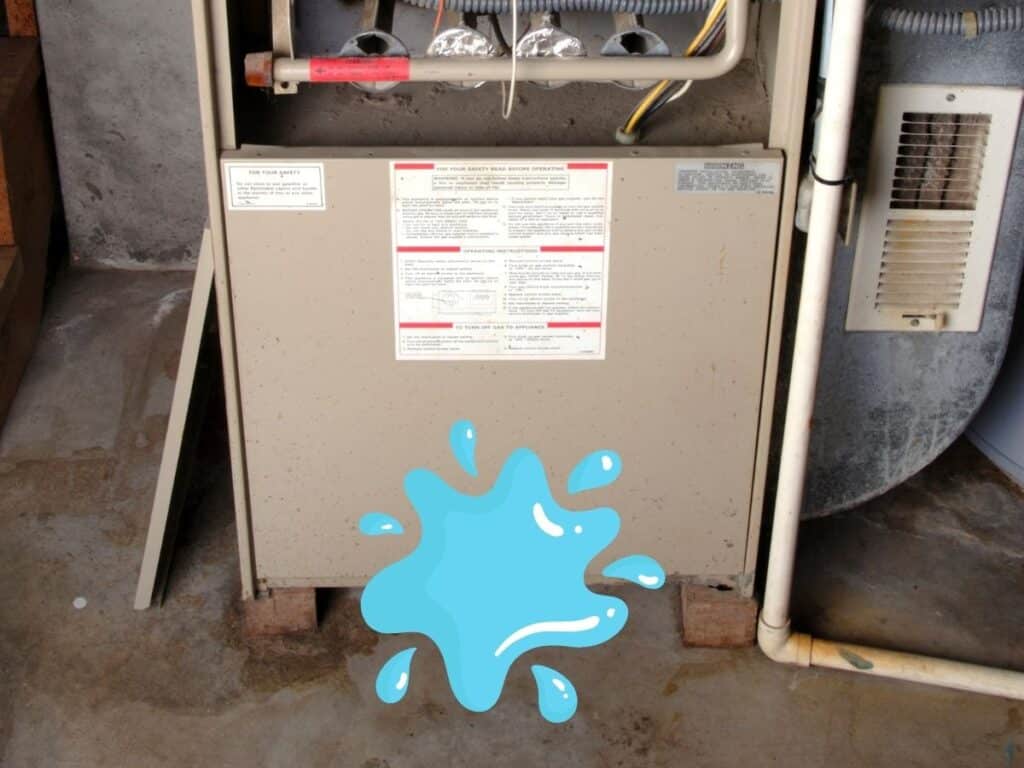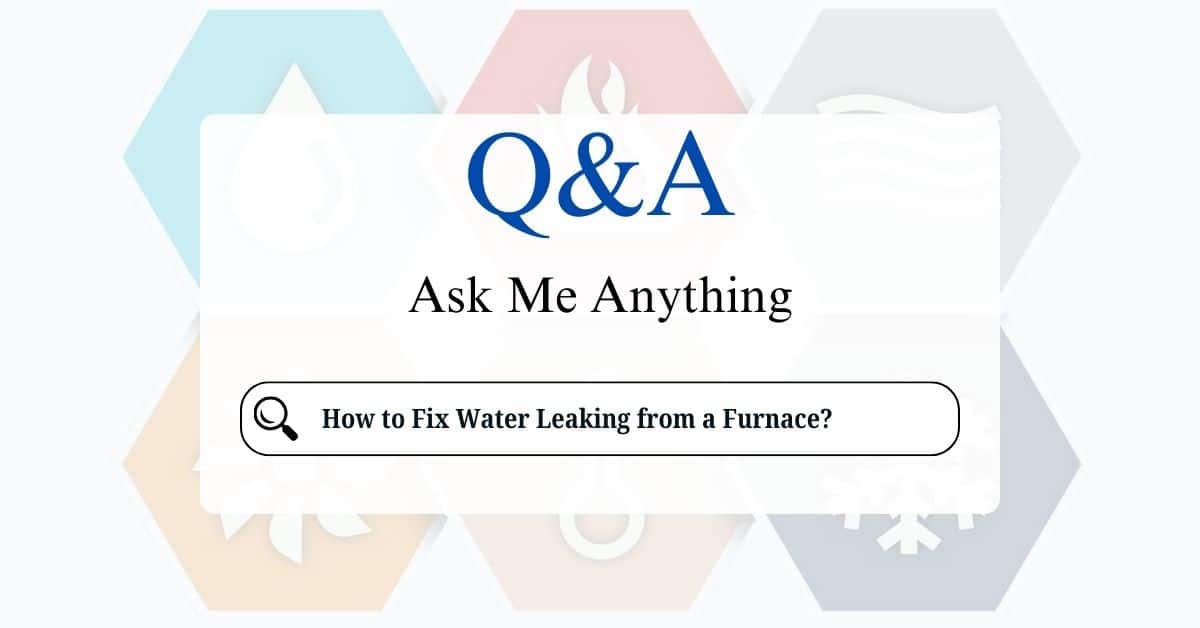A furnace is your best friend during the chilly winter months, keeping your home warm and cozy. But what happens when your trusty furnace starts leaking water? It’s definitely not a welcome sight! A leaking furnace can be a sign of various issues, some simple to fix and others that require professional attention. This friendly guide will walk you through common causes of furnace water leaks and provide helpful troubleshooting steps to get your heating system back on track.
Why is My Furnace Leaking Water?
Before we dive into solutions, let’s explore some of the most frequent reasons why your furnace might be leaking:
- Condensation Issues (High-Efficiency Furnaces): High-efficiency furnaces produce condensation as part of their normal operation. This condensation is typically drained away through a system of pipes and drains. If these drains become clogged or blocked, water can back up and leak.
- Blocked or Cracked Condensate Drain Line: The condensate drain line is a plastic pipe that carries the condensation away from the furnace. If this line becomes clogged with debris, dust, or algae, water can accumulate and leak. Cracks in the line can also cause leaks.
- Faulty Condensate Pump: Some furnaces use a condensate pump to help move the condensation to a drain. If this pump malfunctions, it can lead to water buildup and leaks.
- Humidifier Problems: If your furnace has a humidifier attached, a leak in the humidifier’s water supply line or a malfunctioning humidifier component can cause water to leak near the furnace.
- Heat Exchanger Issues (Less Common, More Serious): The heat exchanger is a critical component that separates combustion gases from the air circulating through your home. In rare cases, a cracked heat exchanger can cause water (from condensation or other sources) to leak. This is a serious safety concern and requires immediate professional attention.

Here’s a step-by-step guide to fix the problem:
1. Turn Off the Furnace
Turn off the furnace at the thermostat and shut off power at the breaker to ensure safety while inspecting and repairing.
2. Identify the Source of the Leak
- Condensation Leak: Common in high-efficiency furnaces due to condensation from exhaust gases.
- Humidifier Leak: If your furnace has an attached humidifier, it might be the source of the leak.
- Clogged Drain Line: A blocked or damaged drain line can cause water to back up and leak.
3. Check the Air Filter
A dirty air filter can restrict airflow, causing the system to overwork and produce excess condensation.
- Inspect and replace the air filter if it’s dirty.
4. Inspect the Condensate Drain Line
Locate the condensate drain line, typically a PVC or plastic tube running from the furnace to a floor drain or pump.
- Clear Blockages:
- Disconnect the drain line.
- Use a wet/dry vacuum or a pipe cleaner to remove any debris or clogs.
- Test the Line:
- Pour water through the line to ensure it flows freely.
5. Check the Condensate Pump (If Applicable)
High-efficiency furnaces with a vertical drain system often use a pump to move water to the drain.
- Inspect the pump for proper operation.
- Clean the pump to remove any buildup.
- Replace the pump if it’s malfunctioning.
6. Inspect the Drain Pan
The drain pan collects excess water from the furnace.
- Check the pan for cracks or damage.
- Replace the pan if it’s leaking.
- Ensure the pan’s drain hole is clear and not clogged.
7. Examine the Heat Exchanger (High-Efficiency Models)
A cracked secondary heat exchanger can cause excessive condensation and water leaks. If the heat exchanger is damaged, contact a professional HVAC technician for repair or replacement.
8. Check the Attached Humidifier (If Applicable)
- Inspect the humidifier for leaks around the water supply line or internal components.
- Replace any worn-out gaskets, seals, or parts causing the leak.
- Turn off the humidifier’s water supply if necessary to stop the leak temporarily.
9. Reassemble and Test the System
Once the source of the leak is fixed, reconnect all components and turn the furnace back on.
Monitor the system for any continued water leaks.
Preventing Future Leaks
Regular maintenance is crucial for preventing furnace problems, including leaks. Here are some tips for maintaining your furnace:
- Clean the condensate drain line annually.
- Replace air filters regularly to ensure proper airflow.
- Schedule regular HVAC maintenance to catch potential issues early.
By following these steps, you can identify and resolve the source of water leaking from your furnace, ensuring it operates safely and efficiently. If the issue is complex or persists, consult a licensed HVAC technician.






